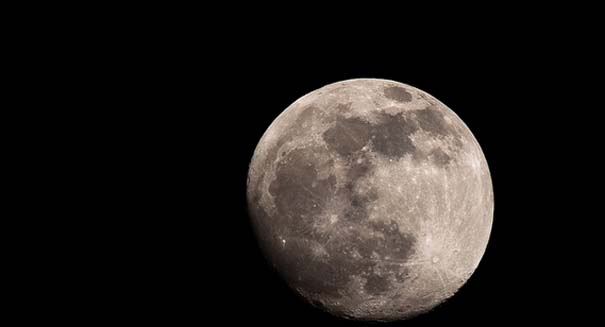
Data from NASA's GRAIL mission suggests that the Procellarum region of the moon - often referred to as the "man in the moon" - may have come from a large plume of magma.
A study published Wednesday in the journal Nature reveals that the Procellarum region on the near side of the moon – a giant basin commonly known as the “man in the moon” – likely came from a large plume of magma from the moon’s interior, as opposed to a massive asteroid strike as previously thought.
Researchers of the study, led by Maria Zuber of the Massachusetts Institute of Technology (MIT), came to this conclusion by utilizing data from NASA’s Gravity Recovery and Interior Laboratory (GRAIL) mission, which ended in late 2012. “Since time immemorial, humanity has looked up and wondered what made the man in the moon,” said Zuber in a statement from NASA. “We know the dark splotches are large, lava-filled, impact basins that were created by asteroid impacts about four billion years ago. GRAIL data indicate that both the near side and the far side of the moon were bombarded by similarly large impactors, but they reacted to them much differently.”
According to the GRAIL data, a high-resolution map of the 3,200-kilometer diameter Procellarum region revealed that its border is not circular, which would be expected from an asteroid collision. Instead, the border is composed of sharp angles that may have been produced by tension cracks in the moon’s crust caused by a plume of hot material from the interior.
“How such a plume arose remains a mystery,” said Zuber in a statement to MIT. “It could be due to radioactive decay of heat-producing elements in the deep interior. Or, conceivably, a very early large impact triggered the plume. But in the latter case, all evidence for such an impact has been completely erased. People who thought that all this volcanism was related to a gigantic impact need to go back and think some more about that.”
According to MIT, evidence of an ancient plume harbored by the moon may be cause for a new lunar mission with a focus on the deep interior, and it is in part due to this new study. “A lot of things in science are really complicated, but I’ve always loved to answer simple questions,” said Zuber. “How many people have looked up at the moon and wondered what produced the pattern we see — let me tell you, I’ve wanted to solve that one!”
Leave a Reply